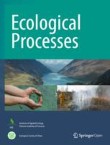Knowledge arising from long-term research of variable retention harvesting in Tierra del Fuego: where do we go from here?
Nothofagus pumilio forests in Tierra del Fuego are the southernmost forests in the world, where extreme climate conditions represent a challenge to attain sustainable forest management. Retention forestry was pro...
